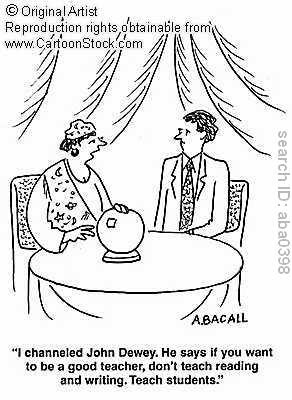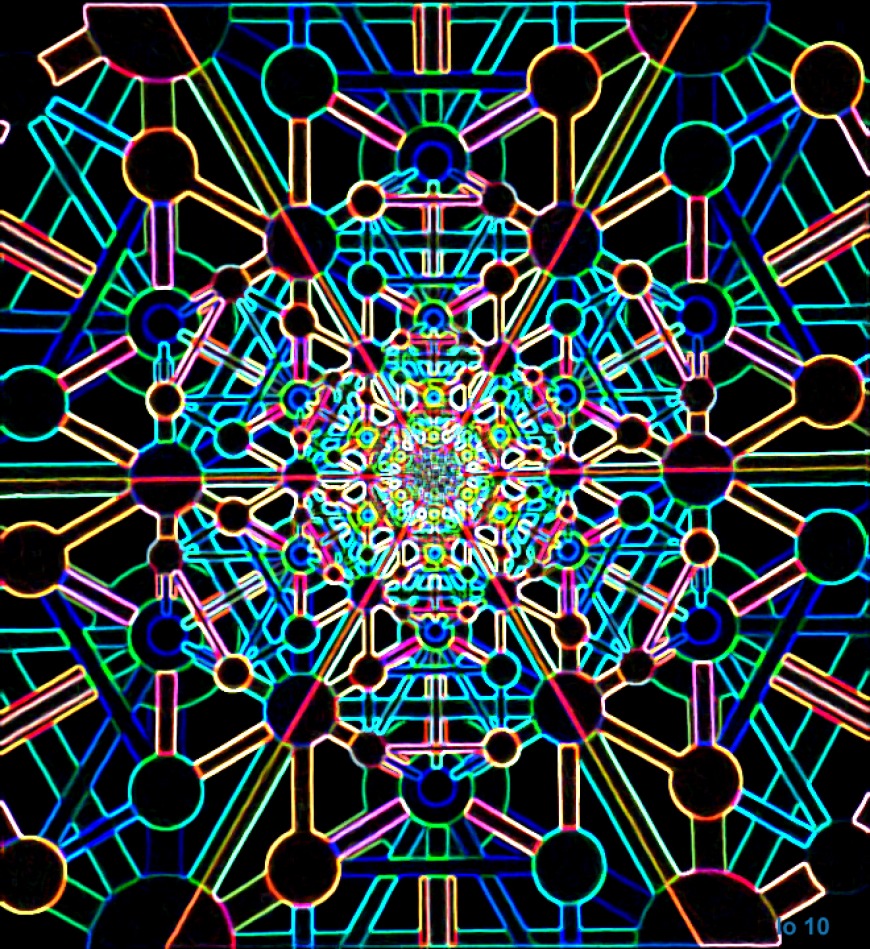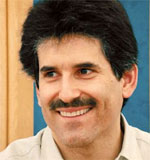.
The article is from 2010, but it's still relevant - large factions of philosophers and neuroscientists still do not believe in embodied cognition - to them, it's all in the brain (which admittedly, is a part of the body, but . . . well, you get it).
Strangely - this is yet another article on metaphors and embodied mind that does not make reference to George Lakoff - who has been working this field for a couple of decades. Check out
The Body of Knowledge: Understanding Embodied Cognition
By Barbara Isanski and Catherine West
APS Staff Writers
The cold shoulder. A heavy topic. A heroic white knight. We regularly use concrete, sensory-rich metaphors like these to express abstract ideas and complicated emotions. But a growing body of research is suggesting that these metaphors are more than just colorful literary devices — there may be an underlying neural basis that literally embodies these metaphors. Psychological scientists are giving us more insight into embodied cognition — the notion that the brain circuits responsible for abstract thinking are closely tied to those circuits that analyze and process sensory experiences— and its role in how we think and feel about our world.
APS Fellow and Charter Member Art Glenberg (Arizona State University) says embodiment “provides a counterweight to the prevailing view that cognition is something in the head that is pretty much separate from behavior. We are animals, and so all of our biology and cognition is ultimately directed towards literal action/behavior for survival and reproduction.” And, he adds, “Explicitly recognizing this will help us to develop better theories.”
Cold Hands, Warm Heart
When someone is described as “chilly,” we understand it means “unfriendly” and not that they should put on a sweater. But using low temperature to capture social remoteness is more than just a convention of language. According to a number of studies, there may be a psychological reason for connecting temperature and social relationships.
In a 2008 study, when volunteers were asked to think about a time they felt socially rejected, they described the temperature in the room as being significantly colder than did volunteers who recalled an experience in which they felt socially included, even though the room temperature was actually the same for both groups. In a separate experiment, volunteers played an online version of a ball-tossing game with three other opponents (unbeknownst to the volunteers, they were the sole participants — a computer program controlled the throws). The game was rigged in a way that some of the volunteers never had the ball tossed to them while other volunteers were able to actively participate in the game. After the game, the volunteers were asked to rate the desirability of various foods and beverages. The volunteers who never had a turn in the ball-tossing game (that is, they were excluded) tended to desire soups and hot coffee more than did the volunteers who played a lot in the game. University of Toronto psychological scientists Chen-Bo Zhong and Geoffrey Leonardelli, who conducted these experiments, suggest that the excluded volunteers craved warmer food and drinks because they felt cold (Zhong & Leonardelli, 2008).
The link between social isolation and physical sensations of cold may work in the other direction, too. A study by APS Fellow Gün R. Semin and his Utrecht University colleague Hans IJzerman suggests that temperature can affect how we feel towards others. Volunteers were handed a hot or cold beverage at the start of the experiment and then were asked to think about their relationships with friends and family. The volunteers who had held a warm beverage tended to rate themselves as being closer to the important people in their lives, compared to volunteers who had been given a cold beverage (IJzerman & Semin, 2009).
Cleanliness = Godliness
Just as feeling distant from other people makes us feel cold, feeling immoral makes us feel physically unclean. Shakespeare dramatized this link vividly: Feeling guilty about the murders she had precipitated, Lady Macbeth scrubs her hands as though she literally had blood on them: “Out damn spot, out I say!” Zhong and Katie Liljenquist (Northwestern University) coined the term “the Macbeth effect” to describe people’s increased urge to wash themselves when their morals become threatened — in other words, an attempt to cleanse ourselves of our sins (Zhong & Liljenquist, 2006).
A recent study by University of Plymouth psychological scientists Simone Schnall, Jennifer Benton, and Sophie Harvey showed that just thinking about concepts related to cleanliness (words like “washed” and “pure,” for example) can influence moral decisions. When volunteers thought about clean concepts, they considered hypothetical moral transgressions to be more acceptable than did those volunteers who thought about neutral concepts. In a follow-up experiment, volunteers who washed their hands rated a moral dilemma as being less severe than did volunteers who didn’t wash their hands (Schnall, Benton, & Harvey, 2008).
Zhong says that the most surprising finding from the temperature and cleanliness studies “is the reciprocal relationship between physical and psychological experiences that are typically considered independent.” He adds, “Not only that our concrete experience of the physical world (e.g., cleanliness and coldness) can directly impact our conception of higher order, abstract constructs such as morality and social relations, but also that these abstract constructs can alter the way we experience the concrete and physical.”
Color My World
Studies have suggested that colors can be linked to morality as well. In a recent study conducted by APS Fellow and Charter Member Gerald L. Clore and Gary D. Sherman (University of Virginia), volunteers responded faster during a Stroop Test when words in black were associated with immorality (e.g., “greed”) than if they were associated with moral words (e.g., “virtuous”). Conversely, there were faster response times when words in white were linked with morality rather than immorality. A subsequent experiment revealed that study participants showing this moral Stroop effect also tended to desire cleaning products (e.g., Lysol disinfectant) over non-cleaning products (e.g., Post-it notes).
These results corroborate those of an earlier study by Clore and his colleagues APS Fellow Michael D. Robinson (North Dakota State University) and Brian P. Meier (Gettysburg College) finding that volunteers were much quicker to categorize positive words (e.g., “gentle”) when they were presented in white lettering than if they were presented in black lettering. The opposite was also true — responses toward negative words (e.g., “sloppy”) displayed in black were much faster than responses to negative words shown in white (Meier, Robinson, & Clore, 2004).
In addition to being connected with immorality, the color black and darkness more generally, are linked with danger and uncertainty (don’t movie villains and mysterious strangers always wear dark clothes?). We have evolved to be wary of what we cannot see, and adults are frequently scared of the dark, even if they consciously know there is nothing to be frightened of. However, a new study by Zhong, Vanessa Bohns (University of Toronto), and Francesca Gino (University of North Carolina in Chapel Hill) suggests that darkness is not just scary — skulking in dark corners may actually make us more prone to dishonest behavior. In their study, volunteers who were in a dimly-lit room were more likely to cheat (and end up with undeserved money) than were volunteers in a brightly-lit room. In addition, volunteers wearing sunglasses behaved more selfishly than did those wearing untinted glasses. These results suggest that when people are in the dark, they feel they are unnoticed by others, and therefore think that they have a better chance of getting away with bad behavior (Zhong, Bohns, & Gino, in press).
That’s Heavy, Dude
Everyday metaphors are not just linked to social relationships and issues of good versus evil — they can be “perceptually grounded” as well — that is, connected somehow to physical space. We “weigh” important objects or consider difficult topics to be “heavy.” In a recent study by Nils B. Jostmann (University of Amsterdam), Daniël Lakens (Utrecht University), and Thomas W. Schubert (Instituto Superior de Ciências do Trabalho e da Empresa, Lisbon), volunteers holding a heavy clipboard assigned more importance to opinions and greater value to foreign currencies than volunteers holding lighter-weight clipboards did. A lot of physical strength is required to move heavy objects around; these results suggest that in a similar way, important issues may require a lot of cognitive effort to be dealt with (Jostmann, Lakens, & Schubert, 2009).
In addition to influencing opinions, heavy things (physically heavy, that is) can also play tricks with our visual perception. When participants in APS Fellow Dennis Proffitt’s lab at the University of Virginia wore heavy backpacks, they judged hills as being steeper than they really are. Heavy backpacks also made volunteers perceive distances as being longer. Keep this in mind next time you set out for a hike.
Do the Locomotion
Forward movement, weighed down or not, is typically associated with progress or achievement. We value “forward thinkers” and call visionaries “ahead of their time.” Our ancestors would have only moved forward if it were safe to do so; one glimpse of a threatening obstacle and they would retreat — that is, they would hasten backward. Over time, our brain has encoded emotions with these impulses to approach or retreat. According to Radboud University psychological scientist Severine Koch, “body locomotion constitutes the purest and most ecologically valid form of approach and avoidance behavior.”
We may not be running away from lions and tigers anymore, but is it possible that the very action of retreat triggers the same hypervigilance experienced by our ancestors ages ago? Koch and colleagues tested this possibility in a simple experiment. Hypothesizing that it would require significantly more cognitive control to walk backward than to walk forward, the researchers instructed students to walk backward and then perform the Stroop Test. The backward walkers were far more accurate with the test than those who took a few steps forward. Instead of conjuring up panic or uncertainty, it seems that our brains have prepared us for difficulty, rewarding us when we “take a step back” to think about a situation (Koch et al., 2009). Our bodies have also installed a buffer for extreme emotions. For example, when we are angry, our left prefrontal cortex — an area of the brain implicated in self-regulation — becomes more activated than the right prefrontal cortex. In an interesting experiment by Eddie Harmon-Jones at Texas A&M, volunteers were criticized as they sat in a chair or lay down. The participants who were lying down showed less left precortical activation than did those who were sitting (Harmon-Jones & Peterson, 2009). In other words, if you need to tell somebody bad news, make sure they are lying down when you talk to them.
The body-brain link doesn’t end there. Although we can’t technically travel through time (yet), when we think of the past we engage in a sort of mental time travel. It is a uniquely human ability to reflect on the past and look toward the future to help us act in the present. Researchers have recently looked at how this mental time travel is represented in the sensorimotor systems that regulate human movement. It turns out our perceptions of space and time are hardwired together.
University of Aberdeen psychological scientist Lynden Miles, did a simple study to measure this in the lab. He fitted participants with a motion sensor while they imagined either future or past events. He found that mental time travel actually has an observable behavioral correlate: the direction of people’s movements through space. Those who thought of the past swayed backward and those who thought of the future moved forward. “The embodiment of time and space yields an overt behavioral marker of an otherwise invisible mental operation,” explains Miles (Miles, Nind, & Macrea, in press).
Mind Readers
Humans are a social species. During interactions with others, our brain works ferociously to decode the other person’s intentions, behaviors, and emotions in hopes of shaping our own view of a situation. Our tendency to pool our experiences with others has served an important evolutionary role, making us uniquely adaptive and able to meet complex challenges. When we interact with others, our neural circuitry is engaged in a series of unconscious tasks, including mirroring the other person’s motor movements. Louis Armstrong sang, “When you’re smilin’, the whole world smiles with you.” Romantics everywhere may be surprised to learn that psychological research has proven this sentiment to be true — merely seeing a smile (or a frown, for that matter) will activate the muscles in our face that make that expression, even if we are unaware of it.
APS Fellow Piotr Winkielman ( UC San Diego) and Jamin Halberstadt (University of Otago) and colleagues revealed that the way we initially interpret the emotions of another person biases our subsequent perception and reaction to their facial expressions. Research volunteers looked at photographs of ambiguous facial expressions that had been labeled as either happy or angry. The, volunteers were later asked to identify the photos that they had originally seen while the researchers measured the volunteers’ facial movements. When viewing a facial expression they had once thought about as angry, people expressed more anger themselves than did people viewing the same face if they had initially recognized it as happy (Halberstadt et al., 2009). “The novel finding here,” said Winkielman, “is that our body is the interface: The place where thoughts and perceptions meet. Our corporeal self is intimately intertwined with how – and what – we think and feel.”
Avid readers describe “getting lost in a book,” and a new study suggests there may be some truth to this. As we read, our mind mentally simulates what we are reading about: As a character grabs something, areas of our brain involved in grasping objects become activated, and as a character is running, motor areas in our brain will light up. APS Fellow Jeffrey M. Zacks and his colleagues Nicole K. Speer, Jeremy R. Reynolds, and Khena M. Swallow from Washington University in St. Louis suggest that these mental representations may actually help us make sense of what we are reading. In addition, these representations are being updated in real-time (as we are reading), so that changes in our brain activation correlate to changes we are reading about (Speer, Reynolds, Swallow, & Zacks, 2009).
There is also evidence that these simulations may be tailored to how a specific individual would actually perform the actions — left and right handers show different patterns of activation. When left-handed individuals read manual-action verbs (e.g., throw, grasp), their right premotor cortex becomes activated. Conversely, when right-handed individuals read those verbs, there is activation in the left premotor cortex. According to Roel M. Willems (Radboud University Nijmegen, The Netherlands), Peter Hagoort (Radboud University Nijmegen, The Netherlands), and Daniel Casasanto (Max Planck Institute for Psycholinguistics, Nijmegen, The Netherlands), these findings lend support to the body-specificity hypothesis: If our mental simulations are based on our own personal experiences, then those simulations should differ for individuals who act differently than we do (Willems, Hagoort, & Casasanto, 2009).
Reading about emotions can affect our behavior and thought too. Semin and VU University Amsterdam psychological scientist Francesco Foroni examined this by testing whether emotion language has an influence on facial muscle activity. A group of students read emotion verbs (e.g., “to smile,” “to cry”) and adjectives (e.g., “funny,” “frustrating”) while the researchers measured the zygomatic major and corrugators supercilii muscles (the smiling and frowning muscles, respectively.) They found that when the students read the action verb “to laugh,” the smiling muscle was activated and there was no measured change in the frowning muscle (Foroni & Semin, 2009).
Can this innate bodily reaction to emotion verbs affect our judgments? In a follow-up experiment, volunteers were shown a series of cartoons with subliminal emotion verbs and adjectives spliced in. They were asked to rate how funny they thought the cartoons were. Here’s the catch: Half of the group held a pen with their lips, preventing them from smiling, while the others were free to move their mouths. The volunteers found cartoons to be funnier when they were preceded by smiling verbs, but this effect was only present in those who did not have their muscle movements blocked. By stifling their innate ability to smile — to connect with the material — researchers altered the viewer’s experience of the cartoon. ♦
References
Foroni, F., & Semin, G. (2009). Language that puts you in touch with your bodily feelings: The multimodal responsiveness of affective expressions. Psychological Science, 20, 974-980.
Halberstadt, J., Winkielman, P., Niedenthal, P.M., & Dalle, N. (2009). Emotional conception: How embodied emotion concepts guide perception and facial action. Psychological Science, 20, 1254-1261.
Harmon-Jones, E., & Peterson, C.K. (2009). Supine body position reduces neural response to anger evocation. Psychological Science, 20, 1209-1210.
IJzerman, H., & Semin, G.R. (2009). The thermometer of social relations: Mapping social proximity on temperature. Psychological Science, 20, 1214-1220.
Jostmann, N.B., Lakens, D., & Schubert, T.W. (2009). Weight as an embodiment of importance. Psychological Science, 20, 1169-1174.
Koch, S., Holland, R.W., Hengstler, M.,& van Knippenberg, A. (2009). Body locomotion as regulatory process. Psychological Science, 20, 549-550.
Meier, B.P., Robinson, M.D., & Clore, G.L. (2004). Why good guys wear white: Automatic inferences about stimulus valence based on brightness. Psychological Science, 15, 82-87.
Miles, L.K., Nind, L.K., & Macrea, C.N. (in press). Moving through time. Psychological Science.
Proffitt, D. (2006). Embodied perception and the economy of action. Perspectives on Psychological Science, 1, 110-122.
Schnall, S., Benton, J., & Harvey, S. (2008) With a clean conscience: Cleanliness reduces the severity of moral judgments. Psychological Science, 19, 1219-1222.
Sherman, G.D., & Clore, G.L. (2009). The color of sin: White and black are perceptual symbols of moral purity and pollution. Psychological Science, 20, 1019-1025.
Speer, N.K., Reynolds, J.R., Swallow, K.M., & Zacks, J.M. (2009) Reading stories activates neural representations of visual and motor experiences. Psychological Science, 20, 989-999.
Willems, R.M., Hagoort, P., & Casasanto, D. (in press). Body-specific representations of action verbs: Neural evidence from right- and left-handers. Psychological Science.
Zhong, C.B., Bohns, V.K., & Gino, F. (in press). A good lamp is the best police: Darkness increases dishonesty and self-interested behavior. Psychological Science.
Zhong, C.B., & Leonardelli, G.J. (2008) Cold and lonely: Does social exclusion literally feel cold? Psychological Science, 19, 838-842.
Zhong, C.B., & Liljenquist, K. (2006). Washing away your sins: Threatened morality and physical cleansing. Science,313, 1451-1452.

 Enlarge Ben Margot/AP
Enlarge Ben Margot/AP














 many years, seems to be profoundly hypocritical, to say the least. But in light of Andrew's behavior of the last several years, the
many years, seems to be profoundly hypocritical, to say the least. But in light of Andrew's behavior of the last several years, the 
